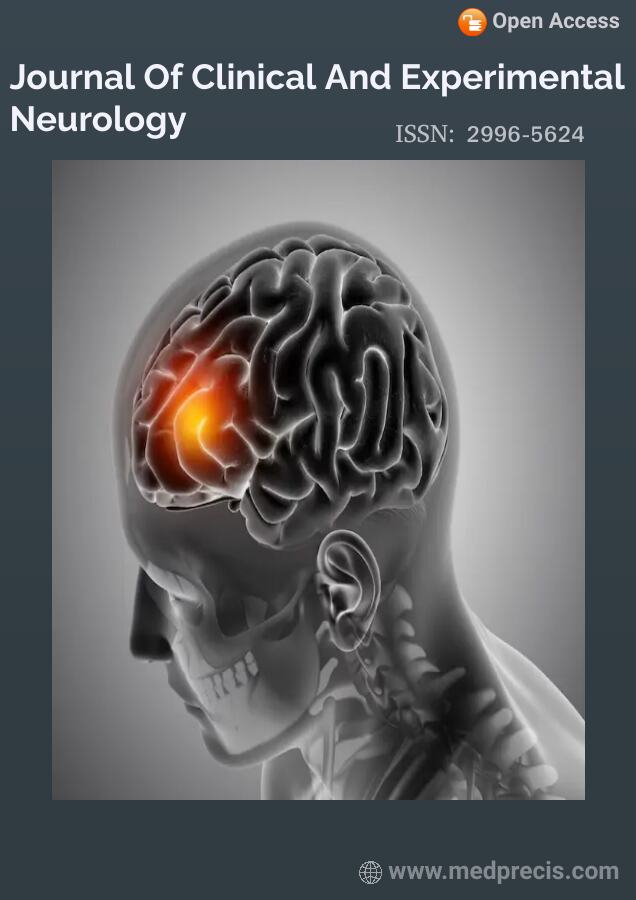Social Interaction Challenges in Children with Autism Spectrum Disorder: Understanding Communication Disorders
Dubois Cossette*
Science Laboratories, Psychology Department, Durham University, Durham, UK
Correspondence to: Dubois Cossette, Science Laboratories, Psychology Department, Durham University, Durham, UK. E-mail: dubois_cossette@gmail.com
Received: May 08, 2023; Accepted: May 20, 2023; Published: May 28, 2023
Citation: Cossette D. Social Interaction Challenges in Children with Autism Spectrum Disorder: Understanding Communication Disorders. J Clin Exp Neurol. 2023;1(1):11-13.
Copyright: © 2023 Cossette D. This is an open-access article distributed under the terms of the Creative Commons Attribution License, which permits unrestricted use, distribution, and reproduction in any medium, provided the original author and source are credited.
ABSTRACT
The term "autism" originates from the Greek word "autos," denoting "self." Children diagnosed with Autism Spectrum Disorder (ASD) often exhibit self-absorption, seemingly inhabiting their realm with challenges in communication and social engagement. Language acquisition poses difficulties for ASD children, as they may find it challenging to grasp verbal interactions and understand the intentions of others. Additionally, they encounter obstacles in interpreting nonverbal cues such as facial expressions, eye contact, and gestures.
Keywords: Autism; Autistic Interests; Development; Language; Neurodevelopment.
INTRODUCTION
The verbal and language capabilities of children with ASD are closely linked to their intellectual and social development. While some children with ASD struggle to communicate verbally or possess minimal speech abilities, others exhibit extensive vocabulary and specialize in particular topics. Understanding the meaning and flow of words and sentences can be challenging for many. These communication difficulties significantly impact their ability to interact with peers, especially those of similar age [1].
Social communication encompasses the use of language in social contexts, including social interaction, social cognition, pragmatics, and language processing [2].
Signs and Symptoms of Social Communication Disorder
Children with social communication disorder encounter challenges in utilizing appropriate verbal and nonverbal communication in social settings. Smiling, greeting, maintaining eye contact, and conversing comfortably pose difficulties for them [3].
Inability to adjust communication style based on the audience's age or profession, such as speaking differently at gatherings versus birthday parties, or with children versus adults.
- Failure to adhere to social etiquette, like turning away while speaking or neglecting to offer a handshake.
- Difficulty in understanding and utilizing verbal and nonverbal cues.
- Inability to grasp the meaning of words, such as interpreting warnings like 'Careful — the road is slippery.'
- Lack of comprehension regarding the contextual nuances of language, including sarcasm or idiomatic expressions.
- Challenges in interpreting both verbal and nonverbal cues during interactions.
Diagnosis of Social Communication Disorder
Pragmatic Language Impairment (PLI) describes social communication issues. Healthcare professionals specializing in child development and developmental disorders, such as autism spectrum disorder, can diagnose social communication dysfunction [4].
The diagnosis often involves various healthcare specialists, including speech pathologists and psychologists, who conduct interviews, language assessments, and behavioral evaluations.
It is crucial to address concerns about potential social communication disorders early by consulting trusted healthcare professionals like child and family health nurses, GPs, or pediatricians, who can refer individuals for further evaluation.
Augmentative communication systems aim to compensate for language comprehension disorders temporarily or permanently in individuals with severe impairments [5].
Social communication abilities encompass the capacity to adjust speech style, consider others' perspectives, comprehend, and apply verbal and nonverbal communication principles, and utilize language components effectively. These skills, vital in both spoken and written forms, facilitate communication in diverse social contexts. Sociocultural and individual factors influence social communication behaviors, including eye contact, facial expressions, and body language [6].
Social communication disorder may co-occur with conditions like intellectual disability, developmental disabilities, learning disorders, ADHD, traumatic brain injury, aphasia, and dementia. However, it cannot be diagnosed concurrently with ASD, given that social communication issues are inherent to ASD alongside repetitive behavior patterns.
REFERENCES
- Kasari C, Brady N, Lord C, Tager-Flusberg H. Assessing the minimally verbal school-aged child with autism spectrum disorder. Autism Res 2013; 6(6):479-493.
- Tager-Flusberg H, Kasari C. Minimally verbal school-aged children with autism spectrum disorder: The neglected end of the spectrum. Autism Res 2013; 6(6)468-478.
- Atkinson L, Niccols A, Paglia A, Coolbear J, Parker HKC, Poulton L, et al. A meta-analysis of time between maternal sensitivity and attachment assessments: Implications for internal working models in infancy/toddlerhood. J Soc Pers Relat 2000; 17(6):791-810.
- Bauminger N, Solomon M, Rogers SJ. Predicting friendship quality in autism spectrum disorders and typical development. J Autism Dev Disord 2010; 40(6):751-761.
- Belsky J, Fearon RMP. Early attachment security, subsequent maternal sensitivity,and later child development: Does continuity in development depend upon continuity of caregiving? Attach Hum Dev 2002; 4(3):361-387.
- Capps L, Sigman M, Mundy P. Attachment security in children with autism. Dev Psychopat 1994; 6(2):249-261.

